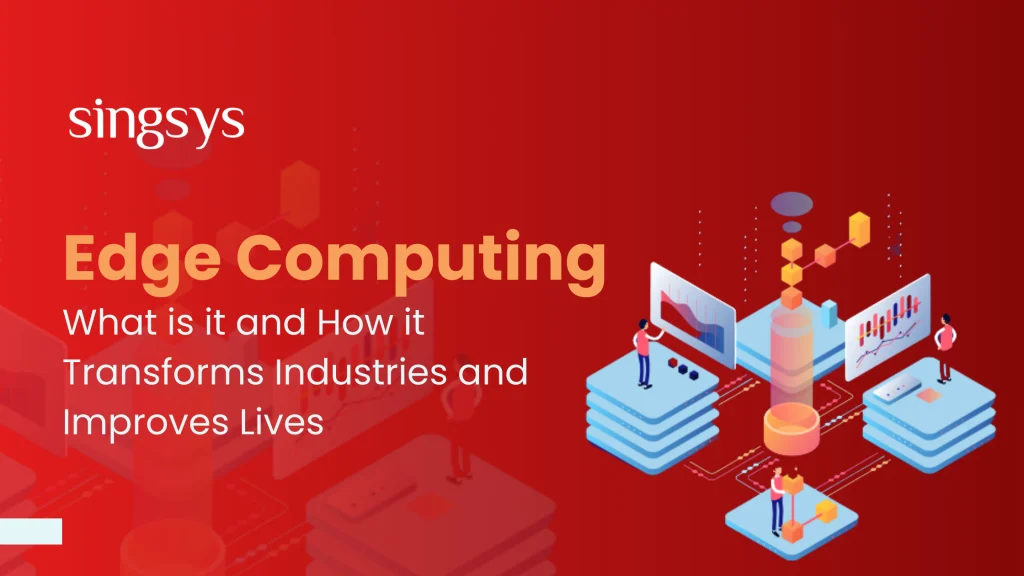How AI Chatbots Are Streamlining E-Commerce Solutions
Learn how AI chatbots are transforming e-commerce by providing seamless customer support, automating tasks, and enhancing the shopping experience for users.
In the fast-evolving landscape of technology, one term has been generating significant buzz – Edge Computing. It’s not just a buzzword but a paradigm-shifting concept revolutionizing how we process and analyze data.

This article dives deep into the world of Edge Computing, exploring its benefits for organizations, its synergy with other technologies, how it differs from traditional computing models, and its impact on solving real-life problems at both industry and individual levels.
The Genesis of Edge Computing
Edge Computing represents a paradigm where data processing occurs closer to the source of data generation rather than relying on a centralized cloud server. This distributed computing model will reduce latency, enhance real-time processing capabilities, and alleviate bandwidth constraints.
Edge Computing emerged as a response to the growing demands for low-latency, high-bandwidth applications, especially in fields like IoT (Internet of Things), autonomous vehicles, and augmented reality.
How Edge Computing Works
Unlike traditional cloud computing, where data goes to a centralized server for processing, Edge Computing brings computation closer to the data source with the help of edge servers, gateways, or devices equipped with edge computing capabilities.
Edge devices can perform data processing, analysis, and even decision-making at or near the data source. That significantly reduces the round-trip time for data transmission to a central server and back.
Edge devices can pre-process data, filter out irrelevant information, and prioritize critical insights. It conserves bandwidth and ensures that only valuable data goes to the central cloud.
Beneficiaries of Edge Computing
1. Industries at the Forefront
Edge Computing transforms patient care, enables real-time monitoring, and facilitates immediate responses to critical situations.
Edge Computing enhances efficiency in manufacturing processes by enabling predictive maintenance, quality control, and automation.
For the transportation sector, Edge Computing is the linchpin for autonomous vehicles, optimised routes, and ensuring passenger safety.
2. Empowering Individuals
Edge Computing empowers smart homes by enabling quick decision-making within the confines of a household without relying on external servers.
Gaming and media streaming are benefited from Edge Computing, as it provides seamless experiences with minimal lag.
Edge Computing and Synergy with Other Technologies
Edge Computing and IoT are a match made in tech heaven. Together, they enable real-time data processing and analysis for countless IoT applications.
Edge AI is gaining traction for on-device machine learning models, providing instant insights without needing a constant connection to the cloud.
The convergence of Blockchain and Edge Computing is reshaping how data is stored and verified, ensuring security and transparency.
Advantages of Edge Computing
One of the primary advantages of Edge Computing is its ability to process data in real-time, minimizing latency to an unprecedented level.
Edge Computing significantly reduces the amount of data that needs to be sent to the cloud, optimizing bandwidth usage.
Edge Computing mitigates privacy concerns by keeping sensitive data closer to its source, reducing the risk of data breaches during transit.
Solving Real-world Problems
In disaster scenarios, timely responses can mean the difference between life and death. Edge Computing ensures critical information is processed instantly, aiding in disaster relief efforts.
Edge Computing facilitates the creation of smart cities by enabling real-time data analysis for traffic management, energy optimization, and public safety.
By providing instantaneous analysis of patient data, Edge Computing is revolutionizing personalized healthcare, tailoring treatments to individual needs.
Future Horizons
As 5G networks become more prevalent, Edge Computing will play a pivotal role in harnessing the full potential of high-speed, low-latency connections.
Quantum Computing with Edge Computing holds promise for solving complex problems that were previously inconceivable.
Streamlined Development and Testing
Edge Computing provides software development companies with a robust platform for streamlined development and thorough testing. By enabling local processing of applications, developers can rapidly iterate, troubleshoot, and fine-tune their software, reducing dependency on distant servers and expediting the development lifecycle that not only saves time but also enhances the quality and robustness of the final product.
Edge Computing is not merely a technological advancement; it’s a catalyst for innovation across industries and a conduit for empowering individuals. As we navigate towards an increasingly connected world, Edge Computing stands as a beacon of efficiency, security, and limitless potential. Embracing this paradigm shift will undoubtedly shape the future of computing and pave the way for a more intelligent, responsive, and connected world.
Sep 26th, 2024
Learn how AI chatbots are transforming e-commerce by providing seamless customer support, automating tasks, and enhancing the shopping experience for users.
Jul 16th, 2024
Discover the most remarkable achievements in artificial intelligence as we honor AI’s Greatest Moments on Artificial Intelligence Appreciation Day.
Jul 11th, 2024
Discover the best methods for adding your blogs to your GitHub profile. Enhance your visibility and engage more followers. Click for detailed guide.